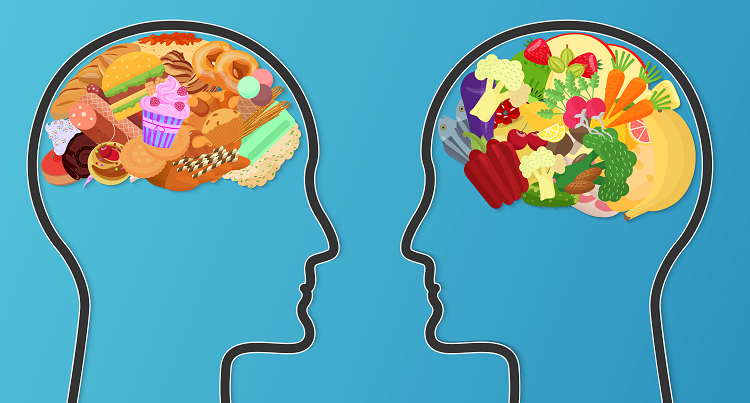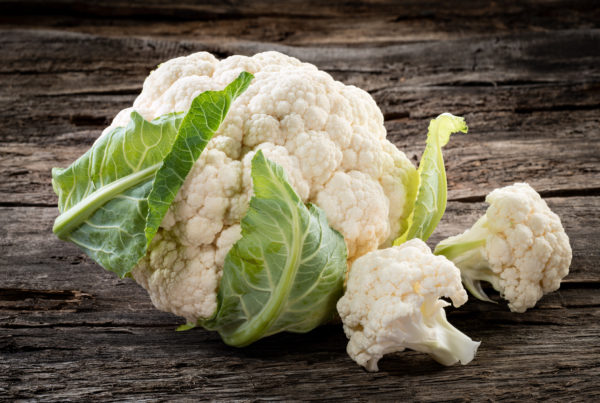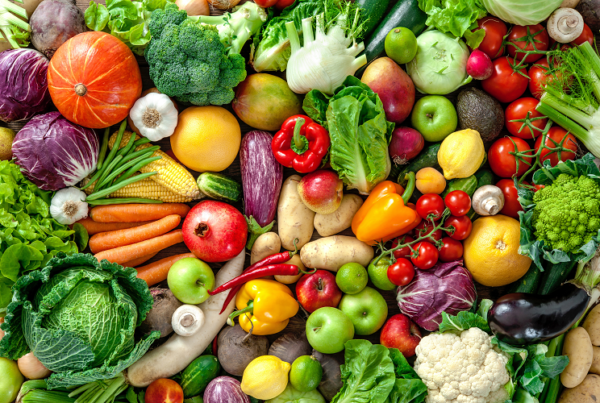
It’s that time of year, as the cold is starting to creep in and you feel all you want to do is hibernate and eat! In fact, the dark and colder months are a signal for what is known as Metabolic Adoption to kick in. Metabolic Adoption goes back to the time when we inhabited the earth as hunter/gatherers. When we’d go through a time of food scarcity our body would naturally store fat and hold on to whatever it could get to build energy reserves.
So, this is when satiety becomes even more crucial. The term ‘satiety’ refers to the feeling of fullness and the suppression of hunger, which will influence how soon you eat again and how much you eat. (Satiety is not a word you hear often – click here to hear to listen to the pronunciation of satiety).
Of course, people often continue to eat, even though they are already satiated, but that’s usually due to emotional reasons or to the fact that they have served themselves (or been served) a portion that is too large and they simply eat because it’s on their plate. It can also be due to the composition of the food – for instance, if it is very sugary or fatty, they are more likely to overeat.
But there are certain things to know about your own satiety that can help us to manage our appetites and to maintain a healthier weight. It’s important to listen to our own satiety signals, particularly in a world where we are tempted with advertising and larger portions everywhere we turn – so there are visual cues and signals to eat often and to eat large. Instead, stop and listen to what you really need and your body will thank you for it.
How Does Satiety Work?
The feeling of satiety takes place due to a number of brain signals that begin when a food or drink is consumed and continue as they enter the gut and are digested and absorbed. The type of signal delivered (i.e. ‘I’m still hungry’ or ‘I’m pleasantly full’) depends on a number of factors, including;
- Beliefs about how filling the food or drink is likely to be;
- The sensory experience of eating the food (appearance, smell, taste, texture etc.)
- The expansion of the stomach;
- Hormones released during the digestion and absorption of the food or drink (eg. ghrelin, which tells our brains that we are hungry and to eat more and leptin, which signals to our brains that we are full and satisfied).
5 Ways to Feel More Satiated
The key is to enhance feelings of satiety every time you eat, so that you are less likely to eat a large amount of food next time you eat. A number of things help with this:
- Slow down your eating: although we can feel the stomach filling up as we eat, it can take some time after food is first eaten for the full range of satiety signals to reach the brain. Slowing down and chewing your food more thoroughly is one of the simplest but most effective ways to lose weight – just try it and see!
- Consume regular protein: Science has proven it. Foods high in protein make us feel more satiated than foods high in fat or carbohydrate/sugar, so including some protein at every meal should help keep you satisfied. Foods high in protein include meats, such as chicken, ham or beef, and fish, eggs, nuts, beans and pulses. Listen to our podcast about how our weight loss plans can help you to achieve a healthy weight because they are based on those very principles.
- Eat more fibre: Fibre helps to slow down digestion which, in turn, helps you to feel fuller for longer. For example, an apple is more filling than apple juice because of the amount of fibre it contains. Additionally, foods that contain fibre often take longer to chew, giving you time to realise that you are satisfied on a smaller portion. A high fibre diet has also been linked to other health benefits including lower blood cholesterol levels, better blood sugar control (meaning fewer cravings!) and bowel regularity so try to include plenty of high-fibre foods in the diet such as wholegrain bread and cereals, beans and pulses and fruit and vegetables.
- Think before you drink: alcohol seems to stimulate appetite in the short-term and therefore drinking alcohol is likely to encourage you to eat more. Drinking alcohol can make you forget about your intentions to eat healthily by making you lose your inhibitions. Alcoholic drinks are also ‘empty calories’ so it’s important to cut down on alcohol if you are intending on losing weight (why not start by listening to our podcast today?) Also try to limit the amount of high calorie drinks, such as sugars-sweetened fizzy drinks you consume as there is some evidence that ‘liquid calories’ are less satiating than calories from solid foods.
- Minimise distractions: Paying more attention to food while eating can help increase feelings of satiety. You could try to minimise distractions while eating by turning off the TV and other screens and always eating at the table. One client of ours used to always snack while standing and noticed a huge change in how satisfied she felt with her food by instigating a new rule to always sit while eating. Read more about the beneits of eating at the table here.
Stay satisfied with your food and you’ll notice all the benefits. Make changes so that you remain full for longer and you will reap the benefits of a way of eating that helps you lose weight without being hungry.



